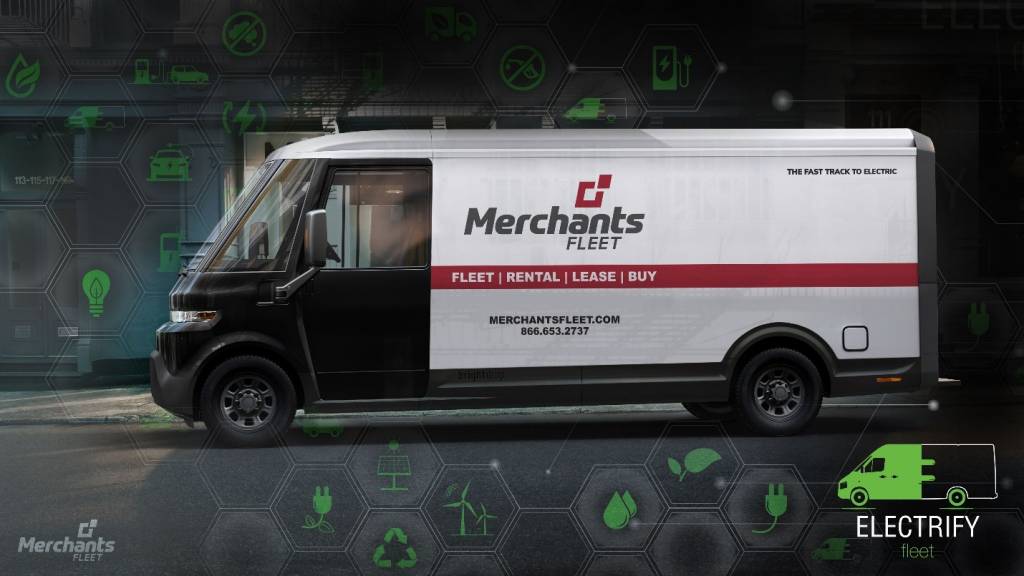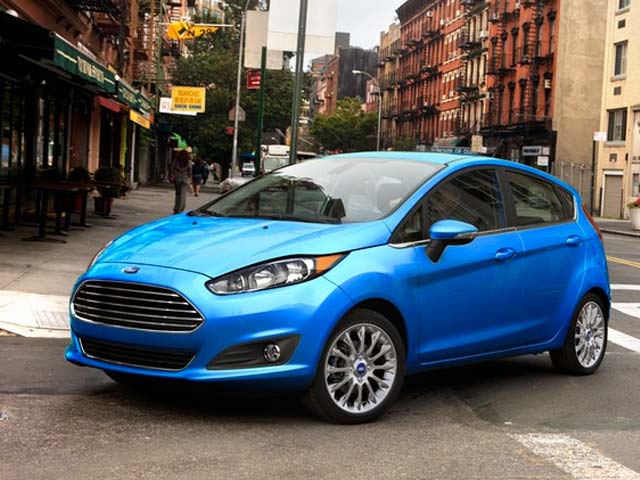I’m Feeling ELECTRIC
 Three years ago, I joined Merchants Fleet as CEO and to me the two biggest things a CEO has to do are simple – create a vision and drive culture. As a former client and board member of Merchants, I was fortunate to have a head start on creating a vision and strategic direction for the company. The company already had an award-winning culture, but I also had some ideas of how to improve the culture to drive the vision. Afterall, vision drives culture and culture drives vision, right? More on that later.
Three years ago, I joined Merchants Fleet as CEO and to me the two biggest things a CEO has to do are simple – create a vision and drive culture. As a former client and board member of Merchants, I was fortunate to have a head start on creating a vision and strategic direction for the company. The company already had an award-winning culture, but I also had some ideas of how to improve the culture to drive the vision. Afterall, vision drives culture and culture drives vision, right? More on that later.
As I read everything I could get my hands on about the auto and fleet industries, I found lots of “future” talk about vehicles driving themselves, connected vehicles streaming gigs of real-time data to fleet managers, electric vehicles saving the climate and strangers jumping into shared vehicles together. Granted, my Mom told me not to talk to strangers let alone jump into cars with them and be whisked away. The industry even had an acronym for this future – ACES – Autonomous, Connected, Electric and Shared.
I was an industry outsider so before I made any bold statements or challenged the status quo, I tried to listen and learn for a short while. And I am so glad I did. Here are a few things I found out in my first couple of years – SCEA not ACES! Shared is already here, granted COVID has challenged some of this premise in the short-term, but it will continue to evolve and morph but fundamentally it has landed. Connected is also already here but the industry is struggling with what to do with all the data and how to normalize it on a standard platform – think radio wavelengths, cell phone bands or television channels. Let me skip by Electrification for a minute and jump to Autonomous – I believe Incremental Autonomy comes before fully autonomous vehicles. What I mean is that our vehicles will continue to add features that assist us driving, and even take over at times like lane-assist, braking, speed control and on and on, but fundamentally I believe we will remain in the driver’s seat for a while – Autonomy will come to the mid-mile first and use that as its proving ground.
Now back to Electrification – I’m ALL IN – chips in the middle of the table ALL IN – like TWO-BILLION dollars all in on the BIG E.
Let me explain by taking a quick sideroad – two of my favorite books of all time are The Tipping Point by Malcolm Gladwell and Crossing the Chasm by Geoffrey Moore. The Tipping Point talks about how little things lead to big things. The best way I can describe an actual tipping point is it’s like magic – when an idea, trend or social behavior crosses a point and becomes mainstream. Think of the smartphone tipping point – when did my Motorola razor phone become old school and my blackberry become cool? Or my blackberry become stodgy and my iPhone become in vogue? It just happened, but it didn’t. All the signs and signals were there, the mainstream just thought it happened over night. And that brings me to my first reading of Crossing the Chasm in 1998 when I embarked on my journey through Silicon Valley during the dot.com era, I learned about marketing high-tech products during the early start up period. Crossing the Chasm really taught me about the 5-stage technology adoption lifecycle – innovators, early adopters, early majority, late majority and laggards. I am forever thankful to my friends at companies like Cisco Systems, Dell, Gateway Computer, Genuity and Netigy for mentoring me on how products mature and accelerate through the cycle.
Back to the BIG E and our main point – we are fast approaching a tipping point in the auto and fleet industry with electric vehicles (EVs) and we will accelerate through the first two phases of the technology adoption life cycle like a GM 1000 horsepower Hummer EV. We will cross the chasm…and fast.
Automakers are pouring hundreds of billions of dollars into developing new EVs and advancements in core battery technology. Energy companies are spinning up plans and plants for providing the infrastructure these EVs will require. New companies are being formed – we have all heard of Tesla but how about Lordstown, Kandi, NIO, Fisker, Xpeng, Rivian, Workhorse, Lucid Motors, Proterra, ChargePoint, Canoo, Arrival, Karma, Envoy, Volta, Nuvve, Electriphi, BrightDrop, ELMS and Chanje. And we really need to watch the repositioning and possible restacking of the current auto industry giants like General Motors, Ford, Toyota, Nissan, Mercedes and more.
At the same time, corporations are seeking ways to reduce their carbon footprint and do their part to reduce the impact of transportation on our environment. Most recently, the US government has made their electric commitment, too – 650,000 vehicles going electric – to give you proper perspective there will not be that many EVs produced in the US this year – that is huge, ah, excuse me I meant big. Amazon has made a bold commitment to have their fleet all electric by 2025. Uber has committed to zero emissions by 2030. And Walmart announced it will zero out emissions, including its long-haul trucks, by 2040. That’s just to name a few.
Let’s do the math – add up those commitments and others across our great country being made and you have more demand than supply. And when demand outstrips supply, manufacturers always find a way to ramp up production.
All this adds up to the tipping point I was talking about. But we must dig deeper to understand WHY?
Two fundamental reasons:
- technology transformation
- societal revolution
In 2001 I received an extremely generous gift by my board of directors – a 50” Fujitsu flat screen TV – weighing in at a few hundred pounds and $15,000. Not a mainstream product at that price, but it sure made for a conversation piece when I had friends over. As production of flat-screens increased, tv prices decreased. As prices decreased, consumer demand soared. As demand soared, production increased again and so the cycle went on and today you can buy a better 50” flat screen for $500 – that is 1/30th the price for better quality, and probably 1/30th the weight too. That is technology transformation – from tube TVs to flat screens – and earlier I walked you through flip-phones to smart phones. 2021 is the year of the EV tipping point – production is ramping up which will drive the cycle of price compression and bring us closer to that of an ICE vehicle, offset by maintenance costs. As Total Cost of Ownership, TCO, crosses the chasm, so too will the early majority flock to EVs.
But how do we get to the chasm to cross it first? Zealots. Enthusiasts. Innovators. Early Adopters. Environmentalists. Corporations with large social responsibility commitments and souls. Just like how we crossed any chasm – myself (like many others) pride ourselves as being innovators and early adopters from tube TV to flat screen TV (with a lot of help as a gift). I also remember one day just outside San Jose seeing a big banner flapping in the wind that said TiVo with a funny icon, I went in and an hour later left with one of the first hundred demo units. I must also sheepishly admit I religiously buy every new iPhone before I even know what the new one will do or how much it costs. And that brings us squarely to the second fundamental reason we are at the tipping point – societal revolution, not evolution but revolution. Climate change has never been so real. People have never been more energized for sustainability products. Companies have never focused as much time and energy into, well energy, huh, that worked out nicely. Don’t believe me – that’s fine – right now google how many of the Fortune 500 companies have put out pledges to be carbon footprint neutral by 2030, check out post after post on LinkedIn with these pledges by companies, and even listen to our 46th President make an emphatic declaration that the US Federal fleet of 650,000 vehicles is going electric. And watch for legislation to follow to drive this change as well.
Today, February 2021, I am feeling ELECTRIC. We are at a tipping point. We will cross the chasm. Demand will outstrip supply, initially. Battery technology is transforming by the day. Society is primed to be a catalyst. Responsible leaders of great companies have pledged their support. Earlier I stated the two main jobs of a CEO are vision and culture. Merchants vision is to enable the movement of people, good and services freely and we plan on doing that by being the fastest growing, most electric fleet management company on the planet and I know a vision that big, bold and brave fuels and energizes our culture each and every day. How committed to our vision are we for our clients? Two Billion dollars committed. As I said, demand will outstrip supply initially, but at Merchants we have both ordered and have intent to buy two-billion dollars of Electric Vehicles over the next three years





